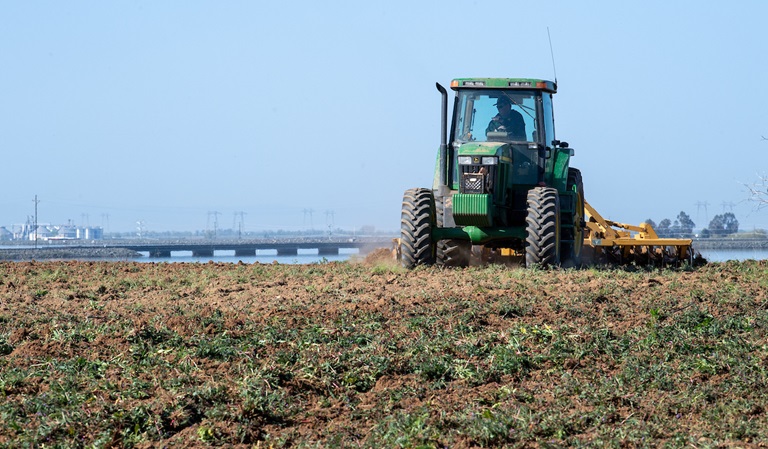Oroville Wildlife Area Promotes Migratory and Native Bird Habitat
California Department of Fish and Wildlife (CDFW), in partnership with California Department of Water Resources (DWR), begins to plow, fertilize, and spread seeds in the Oroville Wildlife Area (OWA) along the Feather River and Thermalito Afterbay in Oroville, California. . 
The nearly 12,000-acre Oroville Wildlife Area (OWA) in Butte County is a popular stopping place on the Pacific Flyway for migrating and native birds. After the Oroville Dam was completed in 1968, the Department of Water Resources (DWR) contracted with the then California Department of Fish and Game to operate the Oroville Wildlife Area for the preservation of fish and wildlife habitat. The OWA also includes DWR’s Thermalito Afterbay reservoir, a prime habitat for migrating waterfowl as well as several different Endangered Species.
“The partnership between DWR and CDFW to manage this area for wildlife habitat has been a tremendous success”, said Eric See, chief of the License Coordination Branch of DWR’s Oroville Field Division. “The OWA not only provides excellent fish and wildlife habitat, it includes the Thermalito Afterbay and the Feather River making it a very popular recreation resource for boating, hiking, fishing, hunting, picnicking, and wildlife viewing.
As part of managing the OWA, the California Department of Fish and Wildlife (CDFW) which manages over 1 million acres of fish and wildlife habitat in the state, farms nearly 300 acres of grains, grasses, and flowering plants yearly to provide food (forage), shelter and nesting cover for migratory and native birds. This spring, CDFW is starting their planting season with 60 acres of sunflower and safflower seeds in 16 different locations around the Thermalito Afterbay, a California State Water Project reservoir. The availability of a large body of water and nearby acres of native and planted vegetation helps support the millions of birds that travel the Pacific Flyway.
“Development and agriculture continue to consume more and more acres of wildland”, said A.J. Dill, manager of the Oroville Wildlife Area. “Growing a variety of plants in wildlife areas helps augment the area’s food supply and adds diversity to the area’s wildlife habitat.” Growing different types of grains, grasses, and flowers provides nutrition for different varieties of birds and wildlife and the safflower and black oil sunflower seeds planted this spring provide the most energy per pound of any typical birdseed.
Both safflowers and sunflowers thrive best in arid climates and dry conditions like those found in the north Sacramento Valley where the OWA is located. Growing sunflowers and safflowers, and the other grains, grasses, and flowers that CDFW plants presents challenges because there is no irrigation system in the OWA, so CDFW staff utilize dry-land farming techniques.
CDFW staff have been planting forage in the OWA for over 50 years since DWR contracted with them to manage the Wildlife Area and have a successful track record in timing the weather with their plowing and seeding activities. This year, DWR will be following the success of these acres of safflowers and sunflowers in providing a welcome bounty of high-energy food and shaded shelter for the Valley’s native birds and migrating visitors.
Additional stories will be shared on the DWR website and social media channels.
See more photos of this year’s planting at the Oroville Wildlife Area.
